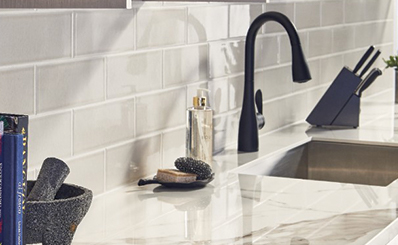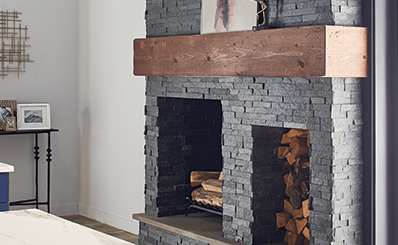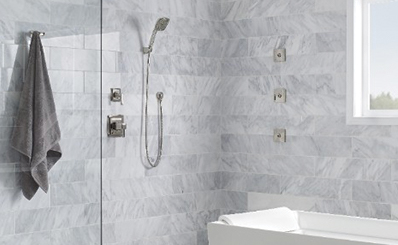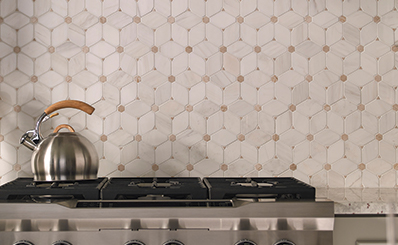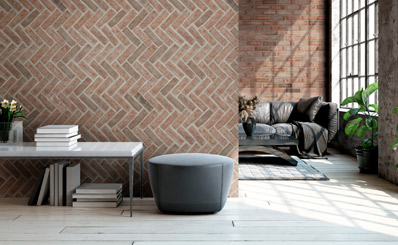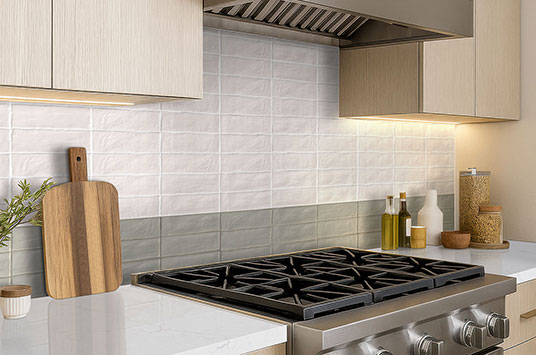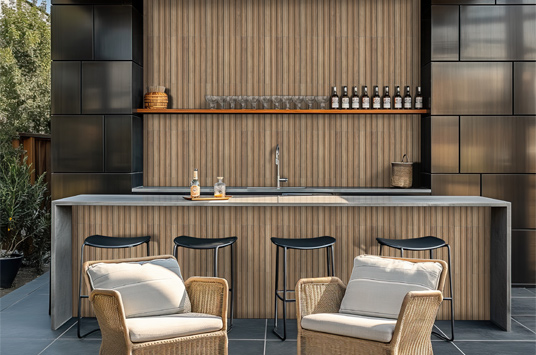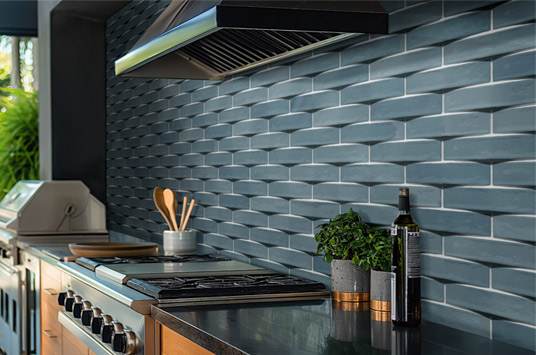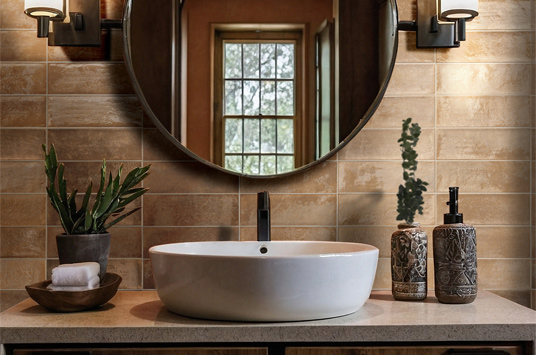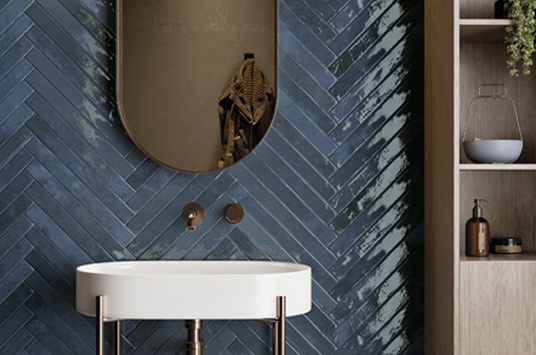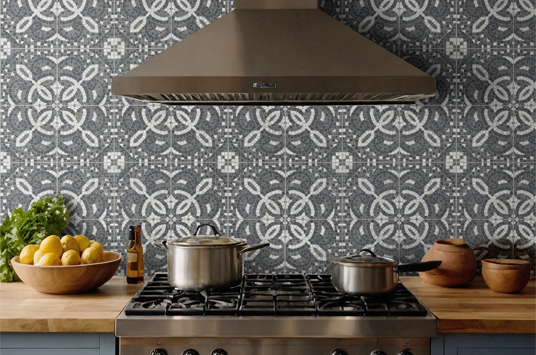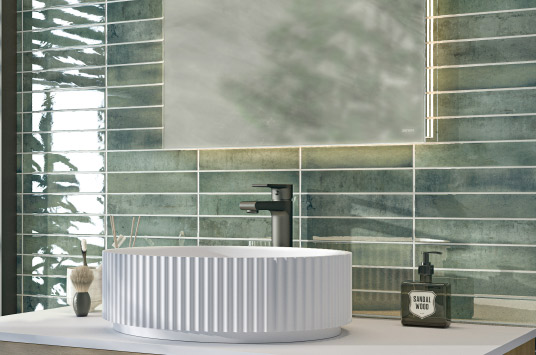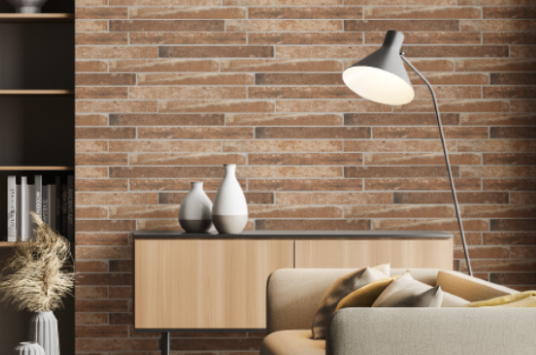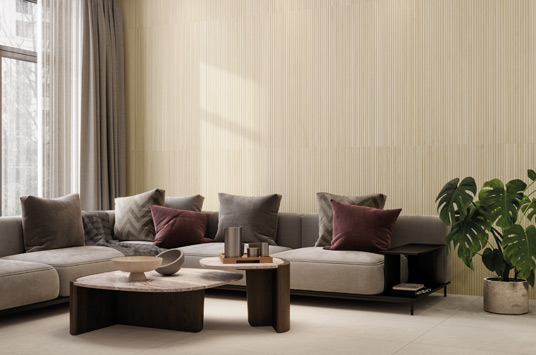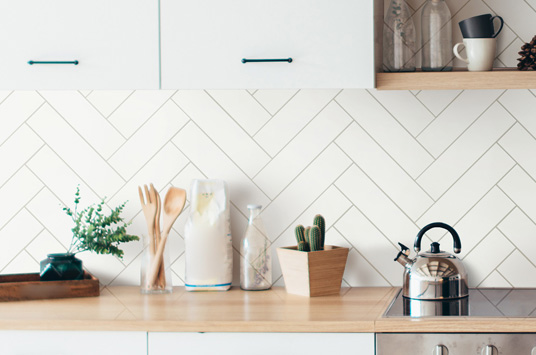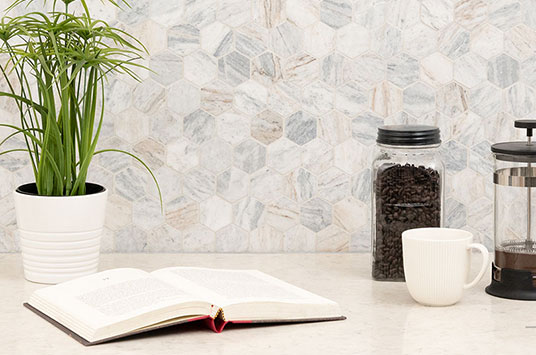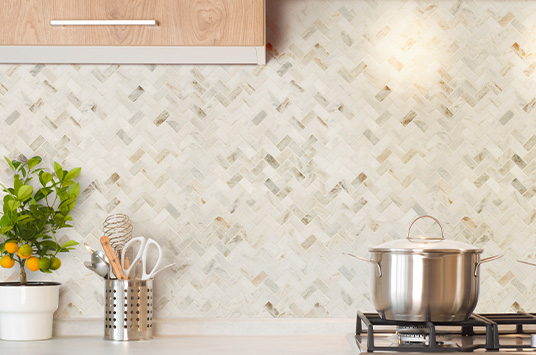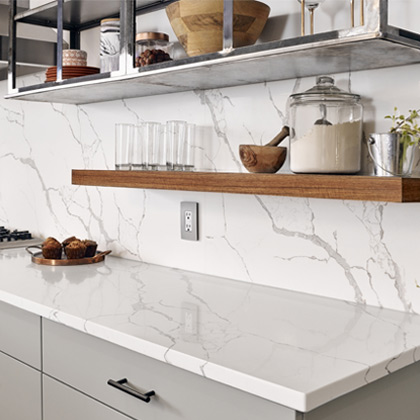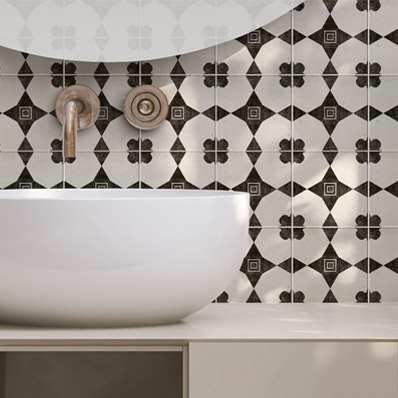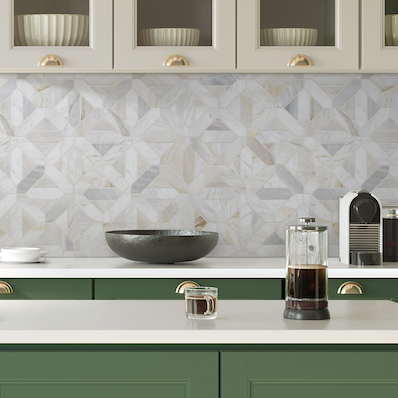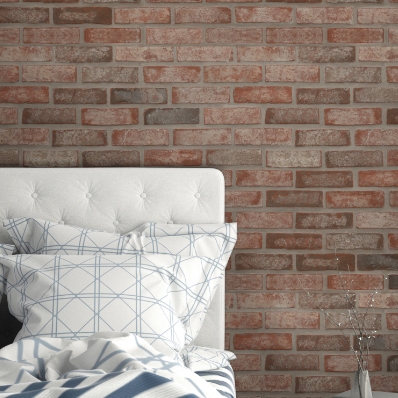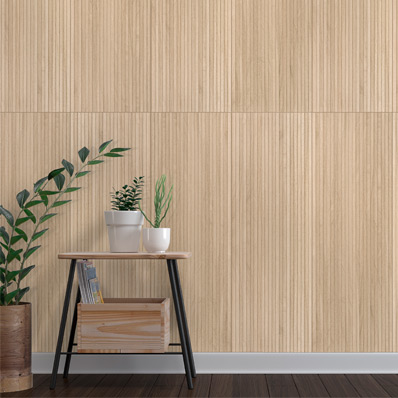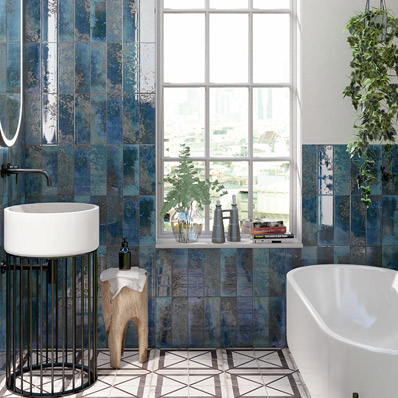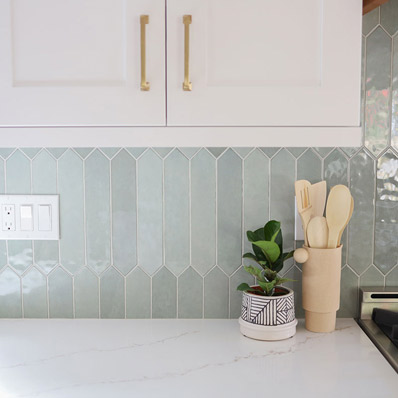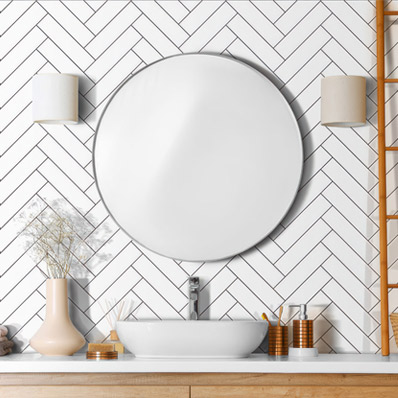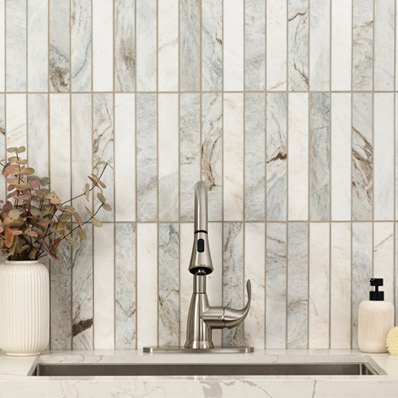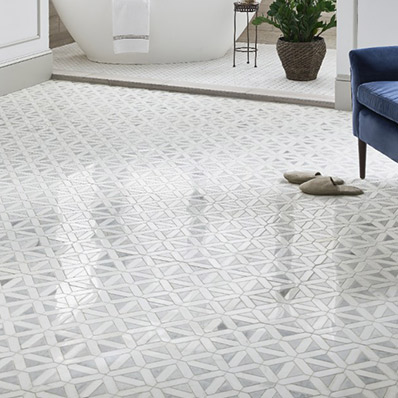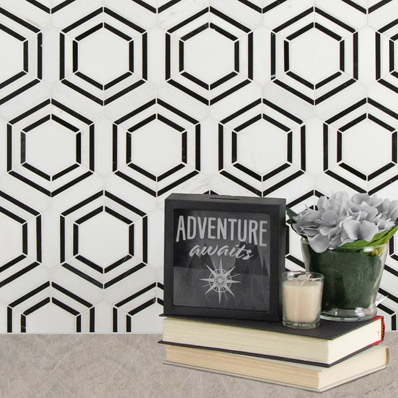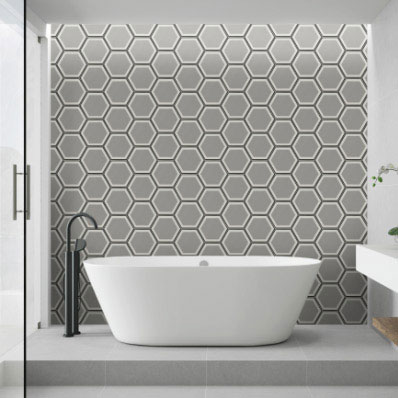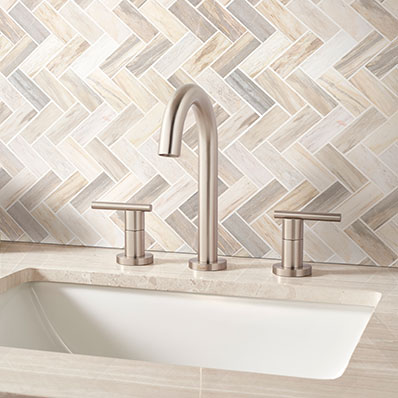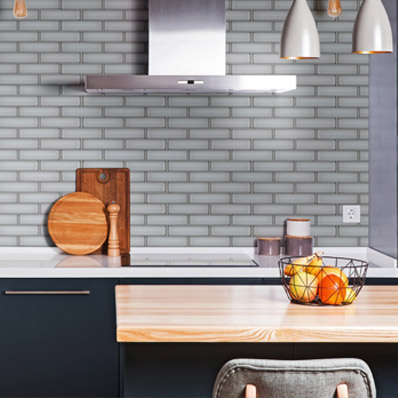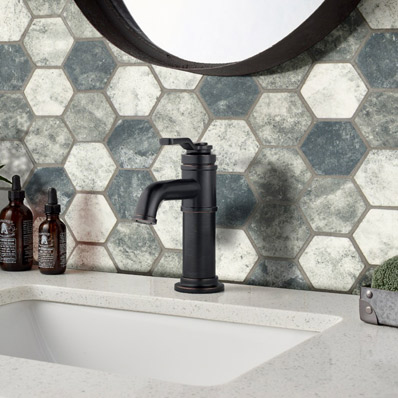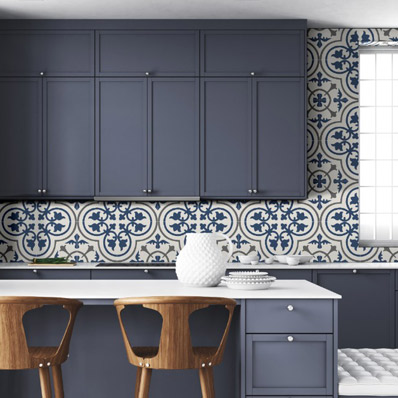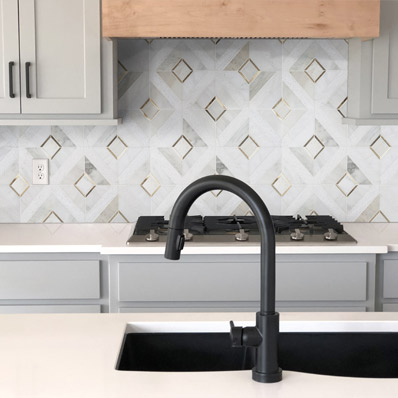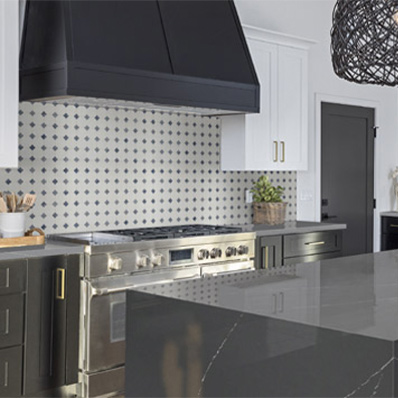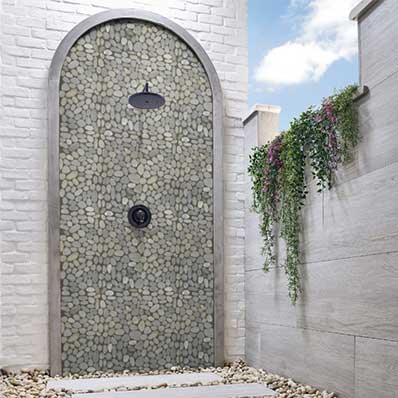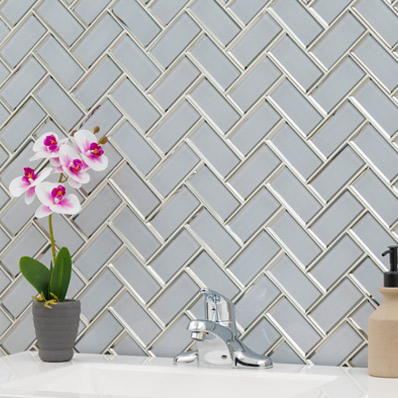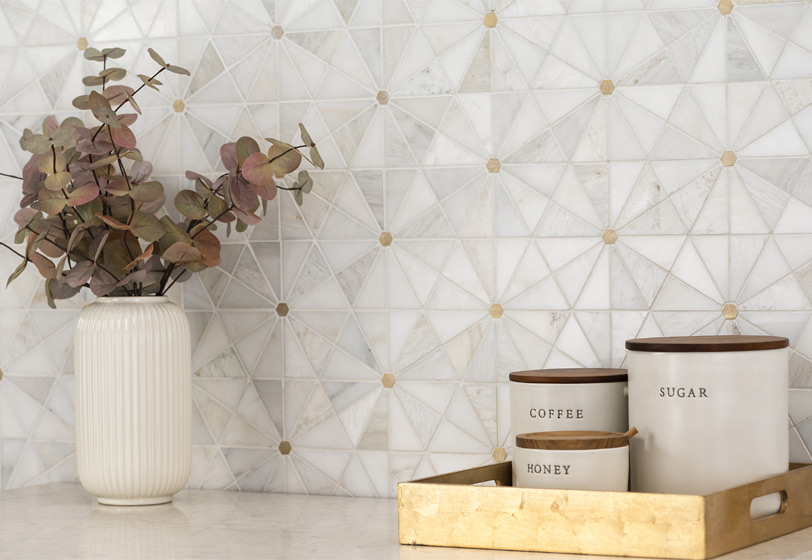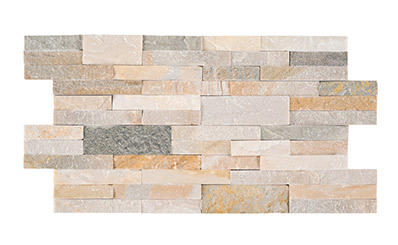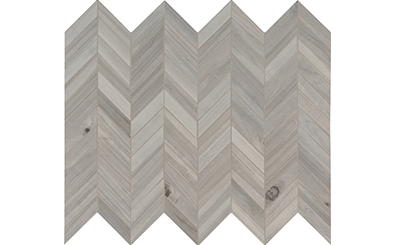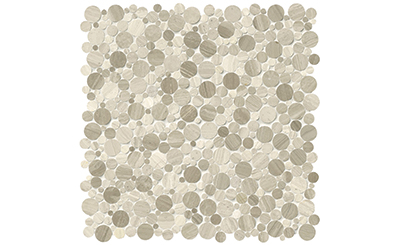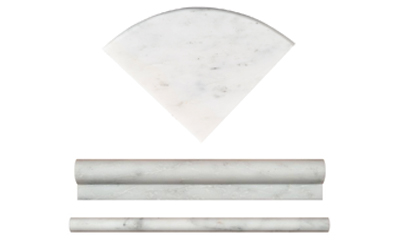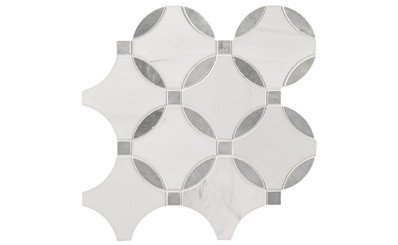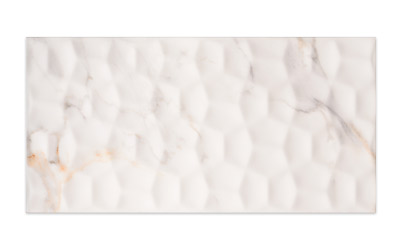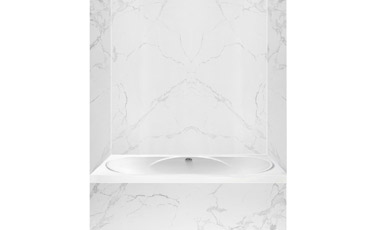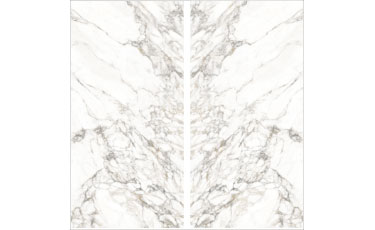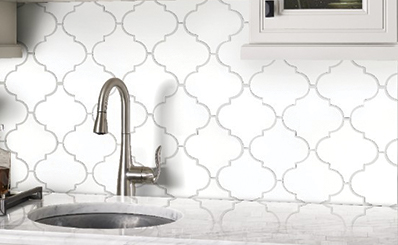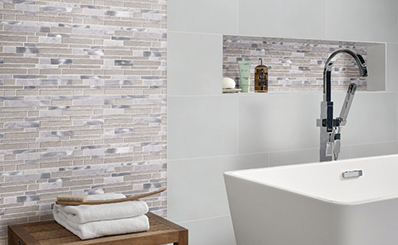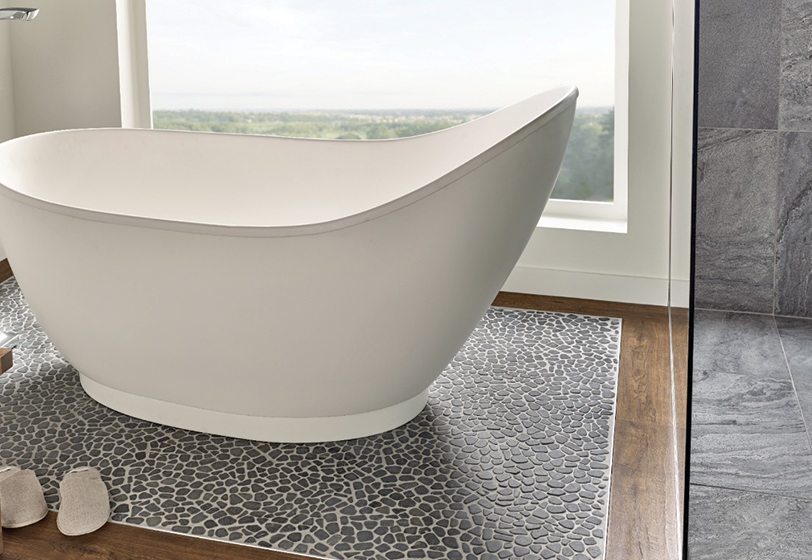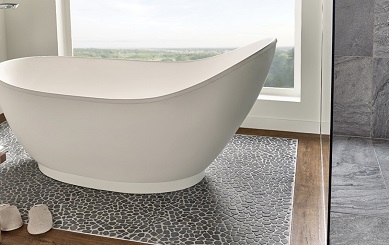Backsplash Tile & Wall Tile Collections
The MSI Backsplash Tile Collection features a wide variety of wall tile and backsplash tile to create the perfect kitchen backsplash, bathroom backsplash, shower or accent wall. The collection include ... Read More
MOST POPULAR
WHAT'S NEW IN WALL TILE
TRENDING COLLECTIONS

MIX AND MATCH WITH DUAL SCENES
LET US HELP
HELPFUL TIPS ABOUT BACKSPLASH TILE
What are some popular shapes and materials for backsplash tile?
Popular Shapes and Materials for Backsplash Tile
When it comes to backsplash tile, there is a wide range of popular shapes and materials that can elevate the style and functionality of your kitchen or bathroom. From classic subway tile to intricate mosaic designs, each option brings its own unique charm. Let's explore some of the most popular shapes and materials for backsplash tile.
Subway Tile
Subway tile is a timeless and versatile option that has been a favorite for decades. It features rectangular tiles with a length-to-width ratio of around 2:1. Subway tile can be arranged in a traditional brick pattern or laid in a herringbone or chevron pattern for a more modern twist. Its clean lines and simplicity make it a popular choice for both traditional and contemporary designs.
Stacked Stone
Stacked stone backsplash adds a rustic and natural touch to any space. It is made up of thin, stacked pieces of natural stone, such as quartzite or slate, giving a three-dimensional effect. Stacked stone creates a textured and visually appealing backdrop that complements various design styles, from farmhouse to industrial.
Specialty Shapes
Specialty shapes like herringbone and chevron tiles offer a unique and eye-catching appeal. Herringbone tiles are arranged in a distinctive zigzag pattern, while chevron tiles form a V-shaped pattern. These shapes add a sense of movement and visual interest to your backsplash, creating a focal point in the room.
Brick Tile
Brick tile brings an urban and industrial vibe to your kitchen or bathroom. With its rectangular shape and rough texture, brick tile offers a charming and vintage-inspired look. It can be installed in a traditional horizontal pattern or a stacked vertical pattern, allowing you to customize the style to match your aesthetic preferences.
Decorative Blends
If you're looking for a backsplash that truly stands out, consider decorative mosaic tile blends. These blends combine different materials, such as natural stone, metal, and glass, in intricate patterns or mosaic designs. The mix of textures, colors, and materials creates a stunning visual impact and adds a touch of luxury to your space.
Encaustic Tile
Encaustic tile is known for its vibrant colors and intricate patterns. These tiles are made by pressing different colors of clay into a patterned mold and then firing them. The result is a beautifully detailed tile with a slightly textured surface. Encaustic tiles are often used to create a bold and artistic focal point in a kitchen or bathroom.
Geometric Patterns
Geometric tiles, such as hexagon tile and hatchwork tile, are increasingly popular in modern interior design. Hexagon tile features six sides and can be arranged in various patterns, including honeycomb or staggered designs. Hatchwork tiles combine geometric shapes like triangles or squares to form visually stunning patterns.
How do I choose a backsplash tile that complements my countertops?
Choosing a Backsplash Tile That Complements Your Countertops
Choosing a backsplash tile that complements your countertops is essential for achieving a cohesive and visually pleasing look in your kitchen or bathroom. Here are some tips to help you make the right choice:
Consider the Color Palette
Start by considering the color palette of your countertops. Look at the dominant colors and undertones. You can either choose a backsplash tile that matches the color of the countertops for a seamless look or opt for complementary or contrasting colors to create visual interest.
Balance Patterns and Textures
If your countertops have a busy or bold pattern, consider balancing it with a simpler backsplash tile. On the other hand, if your countertops are more plain or subtle, you can add interest with a textured or patterned backsplash. It's important to strike a balance between the patterns and textures of both elements to avoid overwhelming the space.
Coordinate Materials
Coordinate the materials of your countertops and backsplash tile to create harmony in the design. For example, if you have marble countertops, consider a marble subway tile backsplash for a cohesive and elegant look. If you have a more contemporary style, you can mix materials such as glass or metal for a modern and sleek aesthetic.
Contrast or Match Undertonese
Pay attention to the undertones of both the countertops and the backsplash tile. If your countertops have warm undertones, consider complementing them with a backsplash tile that has similar warm undertones. Alternatively, you can create an appealing contrast by pairing warm countertops with cool-toned backsplash tiles, or vice versa.
Take Samples Home
It's highly recommended to take samples of your countertop material and various backsplash tiles home to see how they look together in your space. Natural and artificial lighting in your kitchen or bathroom can significantly affect how colors and textures appear. By viewing the samples in your own environment, you can make a more accurate assessment of how well they complement each other.
Seek Professional Advice
If you're unsure about which backsplash tile will best complement your countertops, don't hesitate to seek professional advice. Interior designers or tile specialists can provide valuable insights and help you find the perfect combination that suits your style and preferences.
Can I install a backsplash tile myself?
Can I Install My Own Backsplash?
Absolutely. Installing a backsplash tile can be a satisfying and relatively easy do-it-yourself project. With the right tools, materials, and guidance, you can transform your kitchen or bathroom with a beautiful backsplash that reflects your personal style. Don't be intimidated—many homeowners successfully tackle this project themselves, saving both time and money. So go ahead, embrace your inner DIY enthusiast, and enjoy the process of creating a stunning backsplash that adds charm and value to your space.
How do I clean and maintain my backsplash tile?
How Do I Clean and Maintain My Backsplash Tile?
To keep your backsplash tile looking clean and well-maintained, follow these tips for cleaning and care:
- Regular Cleaning: Wipe down your backsplash tile regularly using a soft cloth or sponge and a mild, non-abrasive cleaner. Avoid harsh chemicals or abrasive scrubbers that can damage the tile's surface.
- Grout Cleaning: Keep the grout lines clean by periodically scrubbing them with a soft brush or an old toothbrush. You can use a mixture of water and mild dish soap or a grout cleaner specifically formulated for the purpose. Rinse thoroughly to remove any residue.
- Stain Removal: Address stains promptly to prevent them from setting in. For food or beverage stains, create a paste using baking soda and water, apply it to the stain, and let it sit for a while before gently scrubbing and rinsing. For tougher stains, you may need to use a commercial tile and grout cleaner.
- Sealing: Some types of backsplash tile, especially natural stone and unglazed tiles, may require sealing to protect them from stains and moisture. Check the manufacturer's recommendations to determine if your tile requires sealing. If so, apply a high-quality tile sealer following the instructions provided.
- Avoid Harsh Substances: Avoid using harsh chemicals, abrasive cleaners, or scouring pads on your backsplash tile, as they can damage the surface and finish. Instead, opt for gentle cleaning solutions and non-abrasive tools to maintain the tile's integrity.
- Preventative Measures: Minimize potential damage by using trivets or hot pads under hot pans or dishes to protect the tile from heat. Use cutting boards when preparing food to prevent scratches. Additionally, avoid using acidic or abrasive substances near the tile, as they can cause etching or scratching.
- Regular Inspections: Periodically inspect your backsplash tile for any signs of damage, such as cracks, loose tiles, or deteriorated grout. Address any issues promptly to prevent further damage and ensure the longevity of your backsplash.
